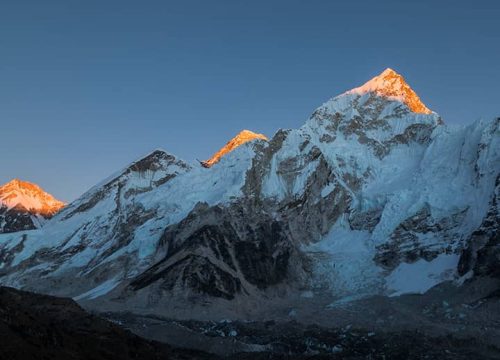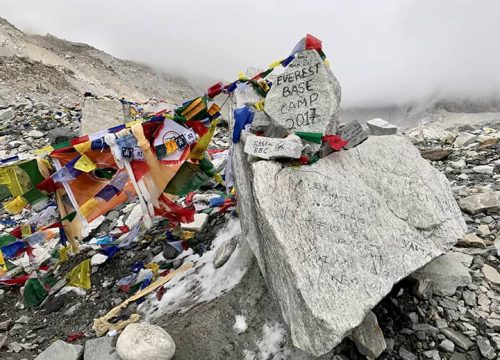With front-row seats to the world’s highest mountains, Nepal trekking is a dream for outdoor adventurers. In the Nepal Himalaya, trekkers can clamber over glaciers, tie prayer flags atop mountain passes, and spend nights in ancient stone villages, sharing the camaraderie of the trail over salted butter tea.
Nepal’s trekking infrastructure makes it easy to explore: fly in, arrange a trekking permit, and start walking. But deciding where to go isn’t easy in a country with thousands of peaks. Towering mountains sweep from 7132m Mount Api in the west to 8586m Kanchenjunga in the east. Popular treks include Everest Base Camp and the Annapurna Circuit, yet dozens of others await, from short treks near Kathmandu to remote camping expeditions in the wild Himalaya.
Everest Region
Good For: Views, Altitude, Buddhist Culture, Ease of Trekking
The high-altitude valleys of Solukhumbu form the main approach for ascents of Mt Everest (8848m). Everest Base Camp (EBC) is one of the most famous trekking destinations in the world. Up to 1,000 trekkers arrive daily at Lukla during peak season (October–November, March–April), making reservations for sleeping spaces essential.
Popularity has advantages: modern trekking lodges, hot showers, Wi-Fi, and small comforts like snacks are widely available. Along the route, ancient Buddhist monasteries, yeti relics, and stunning views of Everest, Ama Dablam, and other summits enrich the journey.
Classic Treks:
- Everest Base Camp 14 Days – The definitive trek climbing right onto the flanks of Everest.
- Everest Three High Passes Trek – Link the Gokyo, Khumbu, and Imja valleys over three of the world’s highest navigable passes.
- Everest Base Camp & Island Peak Climbing Tour – Combine trekking with a mountaineering challenge.
Tip for Trekkers: For Nepal trekking, plan ahead and check route conditions. Remote areas like Upper Mustang or Nar Phu may require permits or a guide. Learn more about Nar Phu Trek.





